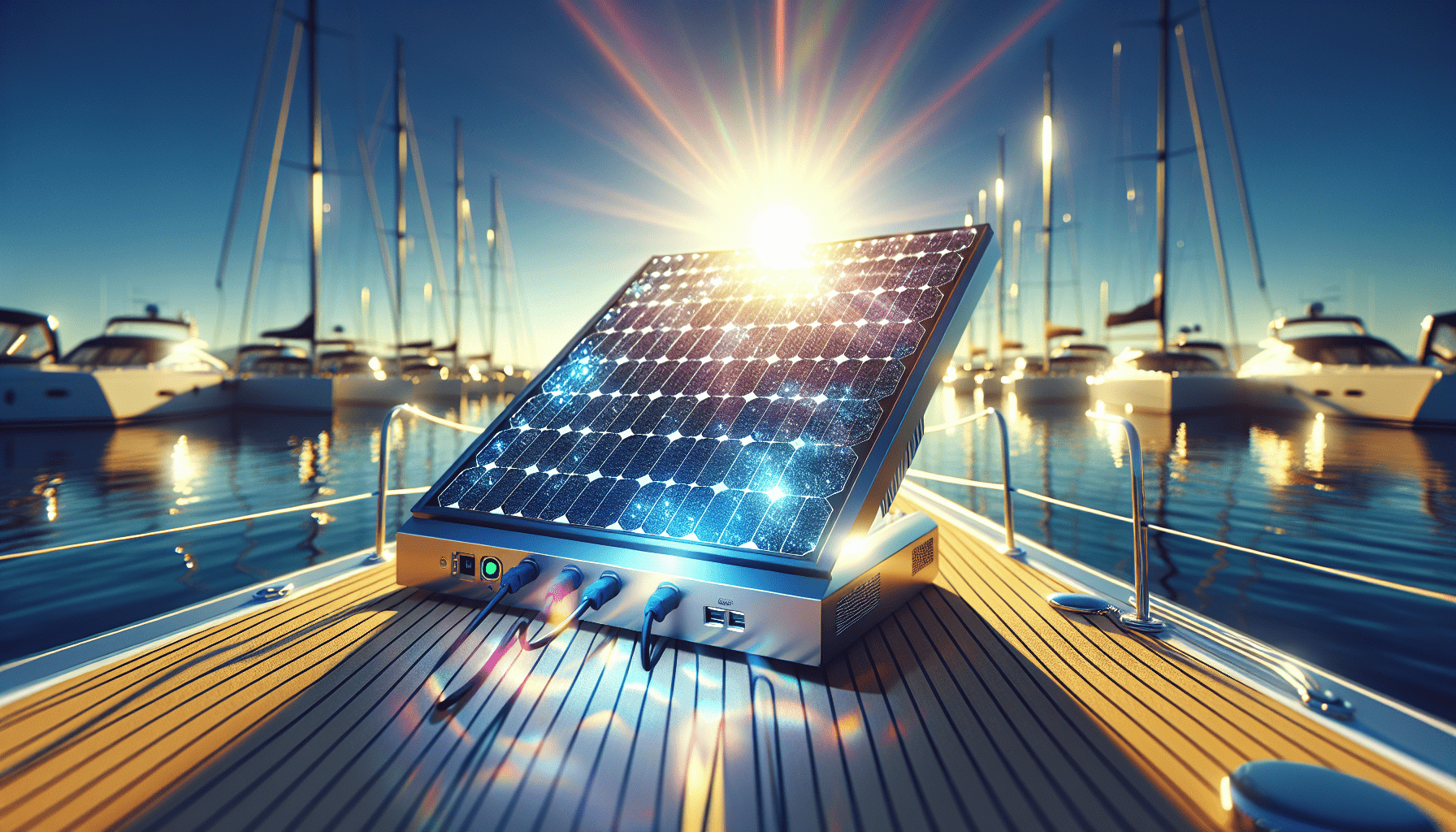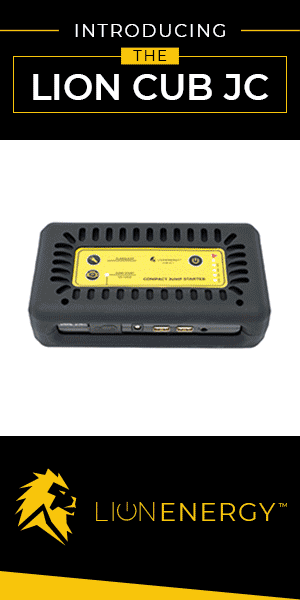Discover how solar power transforms boating with eco-friendly, reliable energy. This guide covers its workings, benefits, and practical tips. Embrace sustainable sailing today!
Have you ever wondered how solar power can revolutionize your boating experience? Imagine the freedom of venturing out on the water, knowing you have a reliable, eco-friendly source of energy that doesn’t rely on traditional fuel. This is where the story of the solar-powered boat battery charger begins.
Chronicles of a Solar-Powered Boat Battery Charger
You might be asking yourself why a solar-powered boat battery charger deserves your attention. The blend of cutting-edge technology, ecological responsibility, and practical benefits makes it a fascinating topic. This article will take you on a journey, exploring how a solar-powered boat battery charger can change your seafaring adventures. By the end, you’ll have a wealth of knowledge about its workings, benefits, and tips for making the most out of this innovative device.

The Genesis of Solar Power
Understanding the roots of solar power can provide a foundation for why it’s so pivotal. Solar power harnesses energy from the sun, making it an incredibly sustainable and renewable resource. It started as an idea, turned into research, and has now blossomed into everyday applications like solar panels on rooftops, portable solar chargers for gadgets, and of course, solar-powered boat battery chargers.
Advantages of Using Solar Power on Boats
Thinking about why you’d opt for a solar-powered boat battery charger involves a variety of factors like environmental benefits, economic advantages, and pure convenience.
Environmental Perks
Solar power is a clean source of energy. Unlike fossil fuels, it does not produce harmful pollutants or greenhouse gases. In essence, using solar power on your boat means you’re contributing less to global warming and aquatic pollution.
Economic Benefits
After the initial investment in solar panels and a charger, the ongoing costs are minimal. No more spending on fuel or worrying about fluctuating fuel prices. Your wallet will thank you in the long run.
Self-Sufficiency and Convenience
Imagine not having to find a marina or a fuel station repeatedly. A solar-powered charger allows your boat to be more self-sufficient. As long as the sun is shining, you have a reliable energy source. This convenience makes trips more spontaneous and less stressful.
Components of a Solar-Powered Boat Battery Charger
To understand how a solar-powered boat battery charger works, you need to know its core components. Let’s break it down:
Solar Panels
These are the heart of the system, capturing sunlight and converting it into electrical energy. Solar panels come in various sizes and efficiencies, so choosing the right one is critical.
Charge Controller
This device manages the energy produced by the solar panels to ensure your battery is charged efficiently and safely. It prevents overcharging and potential damage to the battery.
Battery
The energy generated needs to be stored, and that’s where the battery comes in. Marine batteries are typically deep cycle, meaning they are designed to be regularly discharged and recharged.
Inverter (Optional)
If you have appliances that run on AC (alternating current), you’ll need an inverter to convert the DC (direct current) from the battery into usable power for these devices.
Choosing the Right Solar Charger for Your Boat
Selecting the best solar-powered boat battery charger involves considering several factors. Let’s make it easier by reviewing key elements to look out for:
Power Needs
First, evaluate the power requirements of your boat. This includes all the electrical devices and systems you’ll run on the boat – lights, navigation systems, entertainment units, and so on. A power audit can give you a clear idea of your daily energy consumption.
Size and Efficiency of Solar Panels
Solar panels come with different output ratings. Depending on your power needs, you’ll need to choose panels that can meet that demand. The efficiency of the panels tells you how well they convert sunlight into electricity. High-efficiency panels might be smaller but more costly.
Battery Capacity
Your battery should have enough capacity to store the solar energy produced during the day. This ensures you have sufficient power, even on days when sunlight is sparse.
Durability and Marine Suitability
Boats operate in harsh environments, with exposure to salty water, high humidity, and physical shocks. Thus, your solar system components need to be resilient and marine-grade to withstand these conditions.
Here is a simplified table to help break down these considerations:
| Factor | Consideration |
|---|---|
| Power Needs | Total daily consumption of boat’s electrical systems |
| Solar Panels | Output rating (Watts) and efficiency (%) |
| Battery Capacity | Amp-Hours (Ah) required to store sufficient energy |
| Durability | Marine-grade, resistant to saltwater, UV, and impacts |

Installation Process
Installing a solar-powered boat battery charger might seem daunting, but breaking it down makes it more manageable.
Planning and Preparation
Firstly, figure out the optimal location for your solar panels. Ideally, they should be placed where they get maximum sunlight and are least likely to be shaded or obstructed. Clean the area thoroughly to ensure a solid adhesion if you’re using adhesive mounts.
Mounting the Solar Panels
Depending on your boat’s design, you may use flexible or rigid panels. Flexible panels can conform to the curves of your boat, while rigid panels are usually more efficient and durable. Secure the panels using the appropriate mounts and ensure they are stable and secure.
Connecting the Charge Controller
Next, connect your solar panels to the charge controller using the correct gauge of wire to handle the current. The charge controller should be mounted in a dry, accessible location. This device will ensure your batteries aren’t overcharged or damaged.
Wiring to the Battery
Finally, connect the charge controller to the battery. Follow the manufacturer’s instructions carefully to prevent any mishaps. It’s advisable to use marine-grade wiring and connectors to ensure longevity and safety.
Maintenance Tips
Once installed, your solar-powered boat battery charger will need some upkeep to keep it in top working condition.
Cleaning Solar Panels
Dirty panels can significantly reduce the efficiency of your system. Regularly clean the panels with a soft cloth and a mild cleaning solution to remove dirt, salt, and debris.
Inspecting Connections
Over time, connections can loosen or corrode. Periodically check all your electrical connections and tighten or clean them as necessary.
Battery Health
Keep an eye on your battery’s health. Marine batteries have a lifespan, and using them beyond this period can lead to inefficiencies or failures. Regularly check the water level if you’re using a wet-cell battery and top it up with distilled water as needed.
Real-Life Experiences
Hearing from fellow boaters who have switched to solar can provide additional insight and inspiration. For instance, a sailor named Mike shared that his initial skepticism faded after his first long trip. Not only did he save money on fuel, but the peace of mind that came with a self-sustaining energy source was invaluable. Another boater, Sally, loved how much quieter and relaxed her trips became, without the constant hum of a generator.
Troubleshooting Common Issues
Even the best setups can encounter problems. Here’s how to address some common issues:
Low Power Output
If you notice your system isn’t generating enough power, check for obstructions on the solar panels, test the efficiency with a multimeter, and ensure there’s no damage to the panels or wiring.
Battery Not Charging Fully
Should your battery not be fully charging, the problem could lie with the connections, the charge controller, or the battery itself. Double-check all connections, ensure the charge controller is functioning properly, and test the battery’s health.
Overheating Components
Solar systems can generate heat. Ensure your charge controller and inverter (if used) are in well-ventilated areas. Overheating can cause damage and reduce efficiency.
Taking the Leap
By now, you have a comprehensive understanding of what a solar-powered boat battery charger can offer. Transitioning might feel daunting, but the advantages far outweigh the initial effort and expense. Imagine the serenity of drifting silently across a lake, without the constant worry of dwindling fuel or dead batteries.
When you’re ready to make the change, taking small steps like starting with an energy audit or seeking advice from experienced boaters can make a huge difference. Solar power not only ensures a greener footprint but also enhances the overall boating experience.
Frequently Asked Questions
To wrap things up, let’s address some common questions you might still have:
How much sunlight is necessary for effective charging?
While direct sunlight is optimal, solar panels can still generate some power on cloudy days. However, you’ll get better results in locations with plenty of sunshine.
Are solar panels for boats different from those used on land?
Not necessarily. However, marine-grade panels are designed to withstand harsher conditions including saltwater, physical impacts, and UV exposure.
Can I install a solar system myself, or should I hire a professional?
It depends on your comfort level with electrical work. Many boaters successfully install their own systems, but hiring a professional ensures safety and efficiency.
How long do solar panels and batteries typically last?
High-quality solar panels can last 20-25 years, while marine batteries often need replacement every 3-5 years, depending on usage and maintenance.
Is it possible to add more panels to an existing system?
Yes, most systems are scalable. Just ensure your charge controller and battery capacity can handle the additional input.
Conclusion
Your journey through the chronicles of a solar-powered boat battery charger reveals a seamless blend of innovation, practicality, and environmental consciousness. These devices promise not just an upgrade in your boating experience but a step towards a more sustainable lifestyle. With detailed planning, maintenance, and an understanding of how these systems work, you’re well on your way to making the most out of solar energy on the water. So, sail forth into the horizon, knowing the power of the sun is reliably at your service.
Disclosure: As an Amazon Associate, I earn from qualifying purchases.

